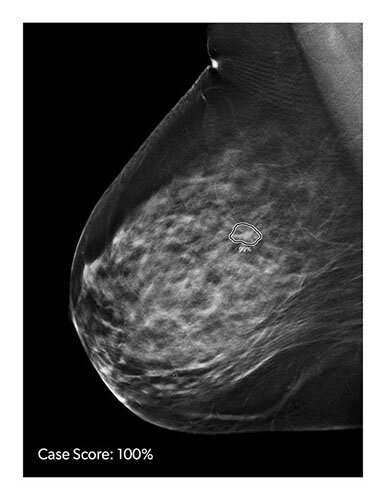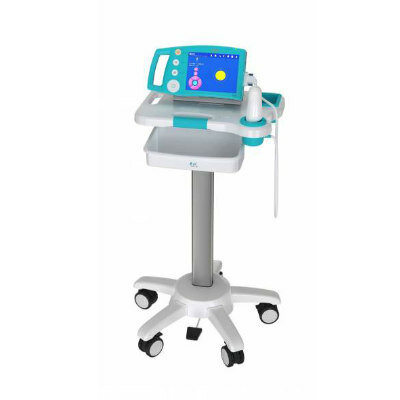Blind Ultrasound Sweeps Using Low-Cost Portable Device Can Identify High-Risk Pregnancies
|
By MedImaging International staff writers Posted on 19 Jul 2023 |

Ultrasound technology has seen extensive growth and expansion in diagnosis and management applications. Its increasing affordability, durability, and portability have improved global access, including in some low- and middle-income countries (LMICs), where it's frequently used in obstetrics among other applications. However, widespread availability and routine use of ultrasound in the majority of LMICs remain limited due to obstacles such as lack of education, training, trained personnel, and ultrasound equipment. A recent study, however, has found that untrained operators performing blind ultrasound sweeps with an affordable, portable, battery-powered device demonstrated high sensitivity and specificity for detecting high-risk pregnancy complications.
Researchers at The Johns Hopkins University School of Medicine (Baltimore, MD, USA) have proposed a solution to eliminate barriers to widespread ultrasonography: volume sweep imaging with a portable, low-cost ultrasound system, supplemented by telemedicine for remote interpretation by a trained specialist or artificial intelligence. This strategy involves blind sweeps of the ultrasound probe, guided by external anatomic landmarks to direct transducer movements. It can be performed by operators without prior medical knowledge, requiring only brief training.
The single-center, prospective cohort study involved 168 women in their second and third trimesters from October 2020 to January 2022. Non-specialists, without previous formal ultrasound training, were briefly trained on a simple eight-step approach to perform a limited obstetric ultrasound examination using blind sweeps of a portable ultrasound probe using external landmarks. Five blinded maternal-fetal medicine subspecialists interpreted these blind sweeps. The primary outcome was the identification of pregnancy complications, such as fetal malpresentation, multiple gestations, placenta previa, and abnormal amniotic fluid volume.
A total of 194 blinded ultrasound examinations were conducted, resulting in 1,552 blinded sweep cine clips. Trainees performed 49 ultrasonograms with normal results and 145 ultrasonograms with abnormal pregnancy results with known complications. The sensitivity for detecting a pre-specified complication was 91.7% among women with abnormal results, with the highest detection rates of 100% for multiple gestations and 91.8% for noncephalic presentation. High negative predictive values of 96.1% for placenta previa and 89.5% for abnormal amniotic fluid volume were also observed. Furthermore, researchers noted a substantial to perfect mean agreement, ranging from 87% to 99.6%, for these pregnancy complication outcomes.
“Closing the gap of the significant health care disparities in obstetrics will require new and innovative strategies,” stated the researchers. “Obstetric volume sweep imaging shows significant promise as a tool to diagnose pregnancy complications and merits further investigation and development.”
Related Links:
The Johns Hopkins University School of Medicine
Latest Ultrasound News
- Deep Learning Advances Super-Resolution Ultrasound Imaging
- Novel Ultrasound-Launched Targeted Nanoparticle Eliminates Biofilm and Bacterial Infection
- AI-Guided Ultrasound System Enables Rapid Assessments of DVT
- Focused Ultrasound Technique Gets Quality Assurance Protocol
- AI-Guided Handheld Ultrasound System Helps Capture Diagnostic-Quality Cardiac Images
- Non-Invasive Ultrasound Imaging Device Diagnoses Risk of Chronic Kidney Disease
- Wearable Ultrasound Platform Paves Way for 24/7 Blood Pressure Monitoring On the Wrist
- Diagnostic Ultrasound Enhancing Agent to Improve Image Quality in Pediatric Heart Patients
- AI Detects COVID-19 in Lung Ultrasound Images
- New Ultrasound Technology to Revolutionize Respiratory Disease Diagnoses
- Dynamic Contrast-Enhanced Ultrasound Highly Useful For Interventions
- Ultrasensitive Broadband Transparent Ultrasound Transducer Enhances Medical Diagnosis
- Artificial Intelligence Detects Heart Defects in Newborns from Ultrasound Images
- Ultrasound Imaging Technology Allows Doctors to Watch Spinal Cord Activity during Surgery

- Shape-Shifting Ultrasound Stickers Detect Post-Surgical Complications
- Non-Invasive Ultrasound Technique Helps Identify Life-Changing Complications after Neck Surgery
Channels
Radiography
view channel
Novel Breast Imaging System Proves As Effective As Mammography
Breast cancer remains the most frequently diagnosed cancer among women. It is projected that one in eight women will be diagnosed with breast cancer during her lifetime, and one in 42 women who turn 50... Read more
AI Assistance Improves Breast-Cancer Screening by Reducing False Positives
Radiologists typically detect one case of cancer for every 200 mammograms reviewed. However, these evaluations often result in false positives, leading to unnecessary patient recalls for additional testing,... Read moreMRI
view channel
PET/MRI Improves Diagnostic Accuracy for Prostate Cancer Patients
The Prostate Imaging Reporting and Data System (PI-RADS) is a five-point scale to assess potential prostate cancer in MR images. PI-RADS category 3 which offers an unclear suggestion of clinically significant... Read more
Next Generation MR-Guided Focused Ultrasound Ushers In Future of Incisionless Neurosurgery
Essential tremor, often called familial, idiopathic, or benign tremor, leads to uncontrollable shaking that significantly affects a person’s life. When traditional medications do not alleviate symptoms,... Read more
Two-Part MRI Scan Detects Prostate Cancer More Quickly without Compromising Diagnostic Quality
Prostate cancer ranks as the most prevalent cancer among men. Over the last decade, the introduction of MRI scans has significantly transformed the diagnosis process, marking the most substantial advancement... Read moreNuclear Medicine
view channel
New SPECT/CT Technique Could Change Imaging Practices and Increase Patient Access
The development of lead-212 (212Pb)-PSMA–based targeted alpha therapy (TAT) is garnering significant interest in treating patients with metastatic castration-resistant prostate cancer. The imaging of 212Pb,... Read moreNew Radiotheranostic System Detects and Treats Ovarian Cancer Noninvasively
Ovarian cancer is the most lethal gynecological cancer, with less than a 30% five-year survival rate for those diagnosed in late stages. Despite surgery and platinum-based chemotherapy being the standard... Read more
AI System Automatically and Reliably Detects Cardiac Amyloidosis Using Scintigraphy Imaging
Cardiac amyloidosis, a condition characterized by the buildup of abnormal protein deposits (amyloids) in the heart muscle, severely affects heart function and can lead to heart failure or death without... Read moreGeneral/Advanced Imaging
view channel
New AI Method Captures Uncertainty in Medical Images
In the field of biomedicine, segmentation is the process of annotating pixels from an important structure in medical images, such as organs or cells. Artificial Intelligence (AI) models are utilized to... Read more.jpg)
CT Coronary Angiography Reduces Need for Invasive Tests to Diagnose Coronary Artery Disease
Coronary artery disease (CAD), one of the leading causes of death worldwide, involves the narrowing of coronary arteries due to atherosclerosis, resulting in insufficient blood flow to the heart muscle.... Read more
Novel Blood Test Could Reduce Need for PET Imaging of Patients with Alzheimer’s
Alzheimer's disease (AD), a condition marked by cognitive decline and the presence of beta-amyloid (Aβ) plaques and neurofibrillary tangles in the brain, poses diagnostic challenges. Amyloid positron emission... Read more.jpg)
CT-Based Deep Learning Algorithm Accurately Differentiates Benign From Malignant Vertebral Fractures
The rise in the aging population is expected to result in a corresponding increase in the prevalence of vertebral fractures which can cause back pain or neurologic compromise, leading to impaired function... Read moreImaging IT
view channel
New Google Cloud Medical Imaging Suite Makes Imaging Healthcare Data More Accessible
Medical imaging is a critical tool used to diagnose patients, and there are billions of medical images scanned globally each year. Imaging data accounts for about 90% of all healthcare data1 and, until... Read more
Global AI in Medical Diagnostics Market to Be Driven by Demand for Image Recognition in Radiology
The global artificial intelligence (AI) in medical diagnostics market is expanding with early disease detection being one of its key applications and image recognition becoming a compelling consumer proposition... Read moreIndustry News
view channel
Bayer and Google Partner on New AI Product for Radiologists
Medical imaging data comprises around 90% of all healthcare data, and it is a highly complex and rich clinical data modality and serves as a vital tool for diagnosing patients. Each year, billions of medical... Read more



















